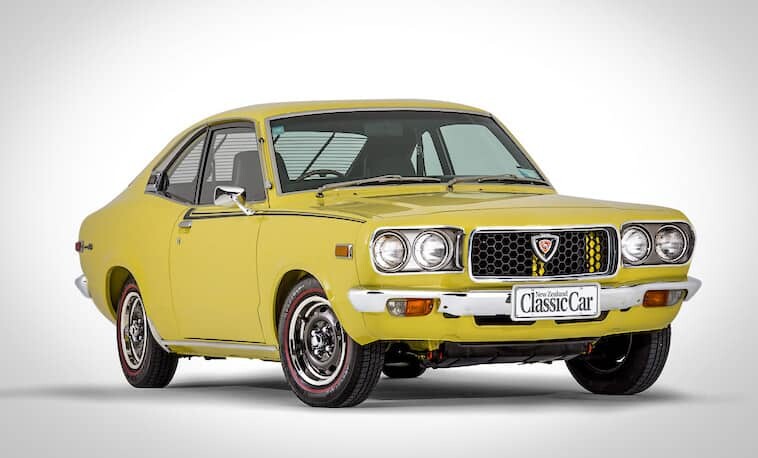This is the original OEM service and workshop repair manual for this unique classic car 1971-1977 Mazda RX3 and RX2 in a simple PDF file format.
1971-1977 Mazda RX3 Repair Manual
$25.90
This is the original OEM service and workshop repair manual for this unique classic car 1971-1977 Mazda RX3 and RX2 including the wiring diagrams in a simple PDF file format. As you can see from the sample pages below, the manual has been scanned to make it available in a simple PDF format to all Mazda RX3 and Rx2 owners.
| File Format | |
| File Language | English |
| You’ll Get | 67.6 MB |
| Page Count | 262 |
| Delivery Method | Instant Download |
Sample Pages: 1971-1977 Mazda RX3 and RX2 Repair Manual
General Car Profile
1971-1978 Mazda RX-3 specs
- NUMBER MADE: 270,000 (approx)
- BODY STYLES: steel integrated body/chassis four-door sedan, wagon, or two-door coupe
- ENGINE: 982cc (10A) or 1146cc (12A/B) twin-rotor with a single downdraft carburetor
- POWER & TORQUE: 78kW @ 7000rpm, 135Nm @ 4000rpm (10A). 97kW claimed for the 12A.
- PERFORMANCE: 0-96km/h 9.1 seconds, 0-400 metres 17.1 seconds (10A)
- TRANSMISSION: four-speed manual
- SUSPENSION: Independent with Macpherson struts, coil springs, control arms & anti-roll bar (f) Live axle with semi-elliptic springs, locating links & telescopic shock absorbers (r)
- BRAKES: disc (f) drum (r) with power assistance
- TYRES: 155SR13 radial
Years ago, no one could have imagined how collectible the little Mazda RX-3 would become.
They were consumer goods, left at the tip without a second thought once many original owners had their use. Those that did end up on the secondhand market were almost all modified in some way thanks to decades as cheap performance weapons. Take into further account, the cars that ended up tress, or simply rusted away as all 1970s cars did – history has shown that the humble little rotary is one serious piece of rare metal; and is now one of the hottest properties in Japanese collectibles.
When you look back at the history of Wankel engine cars, you could be forgiven for wondering what in hell people were thinking. The promise of a smoother, more compact, and quick-revving powerplant, delivering more horses per cubic inch than a conventional four-stroke reciprocating engine was attractive, but not necessarily compelling.
As pioneers such as NSU discovered, there were as many downsides as up to the then comparatively new technology. One was gaining reliability – chewed-out rotor seals was an issue – and the other was overcoming the buying public’s natural suspicion of any technology that was relatively unproven.
Mazda was really the only company that comprehensively overcame those issues. One of its tactics was to provide ample reassurance. In America, the company offered a five-year or 75,000 mile (120,000km) warranty on engines, way back in the seventies.
If any car represents the coming of age of the rotary, it’s the RX-3 in its almost baffling array of variants. Sold as the Savanna in other markets, the series based on the Grand Familia platform rolled into the market in 1971 (March 1972 in Australia) powered by the 10A twin-rotor engine.










